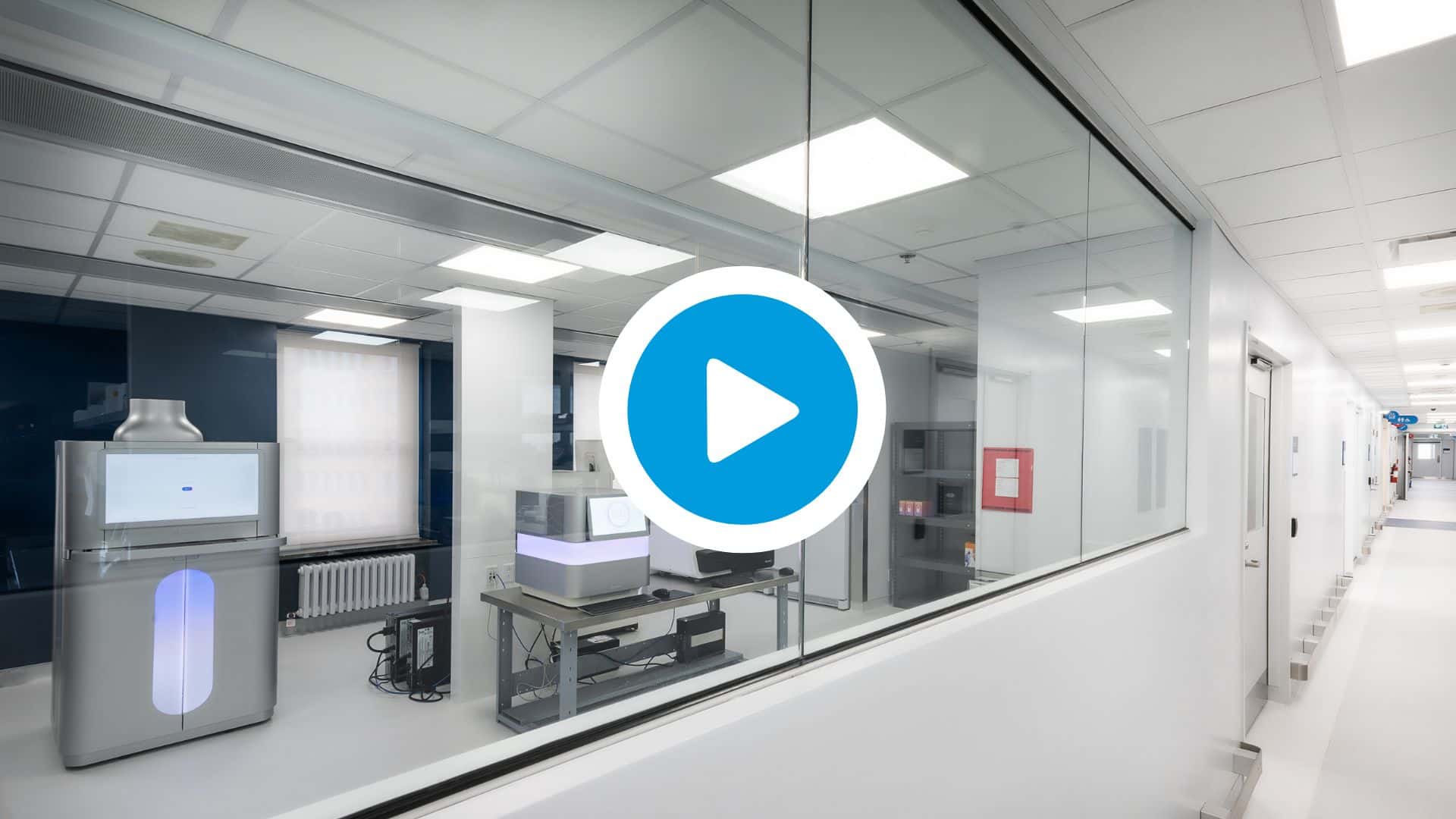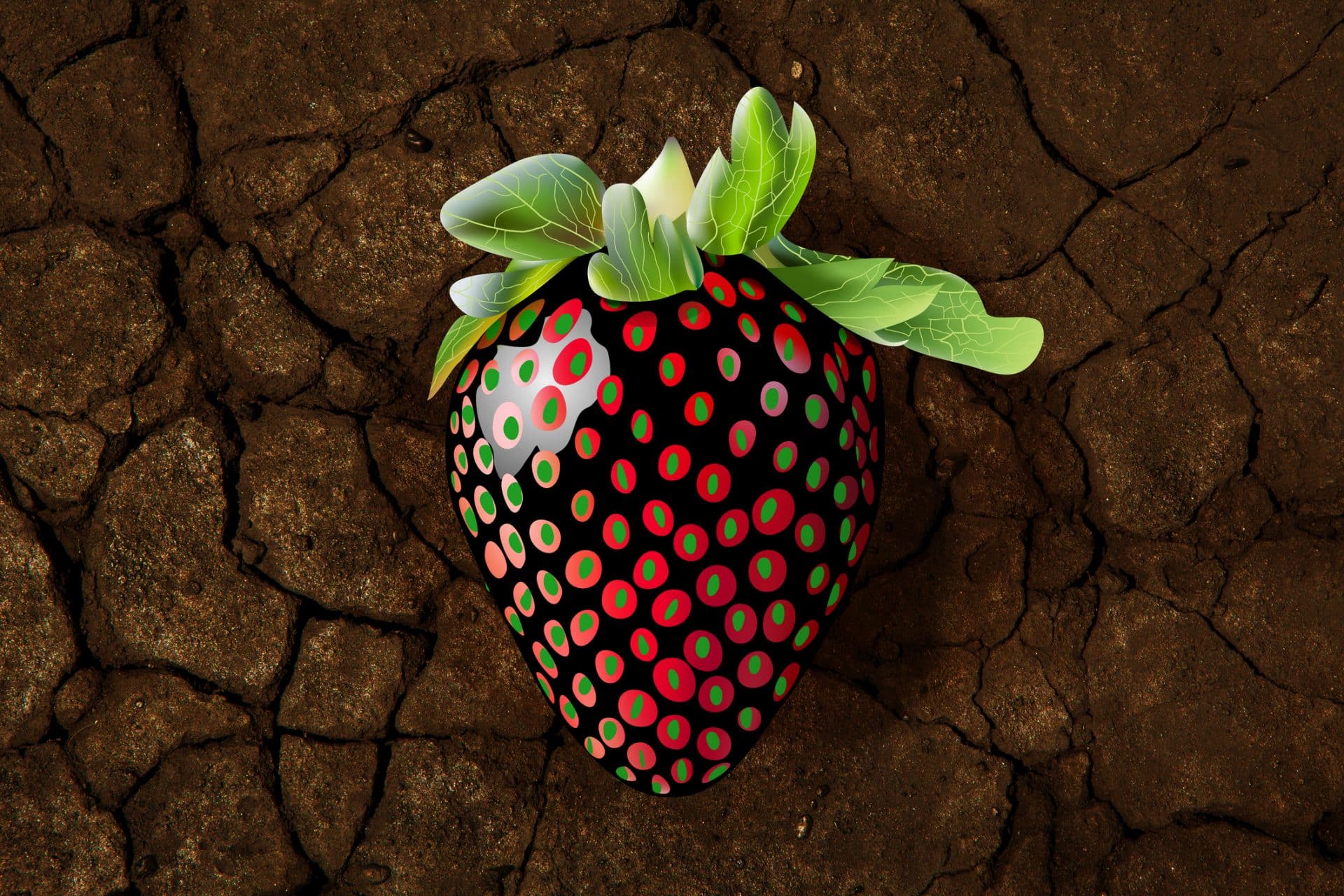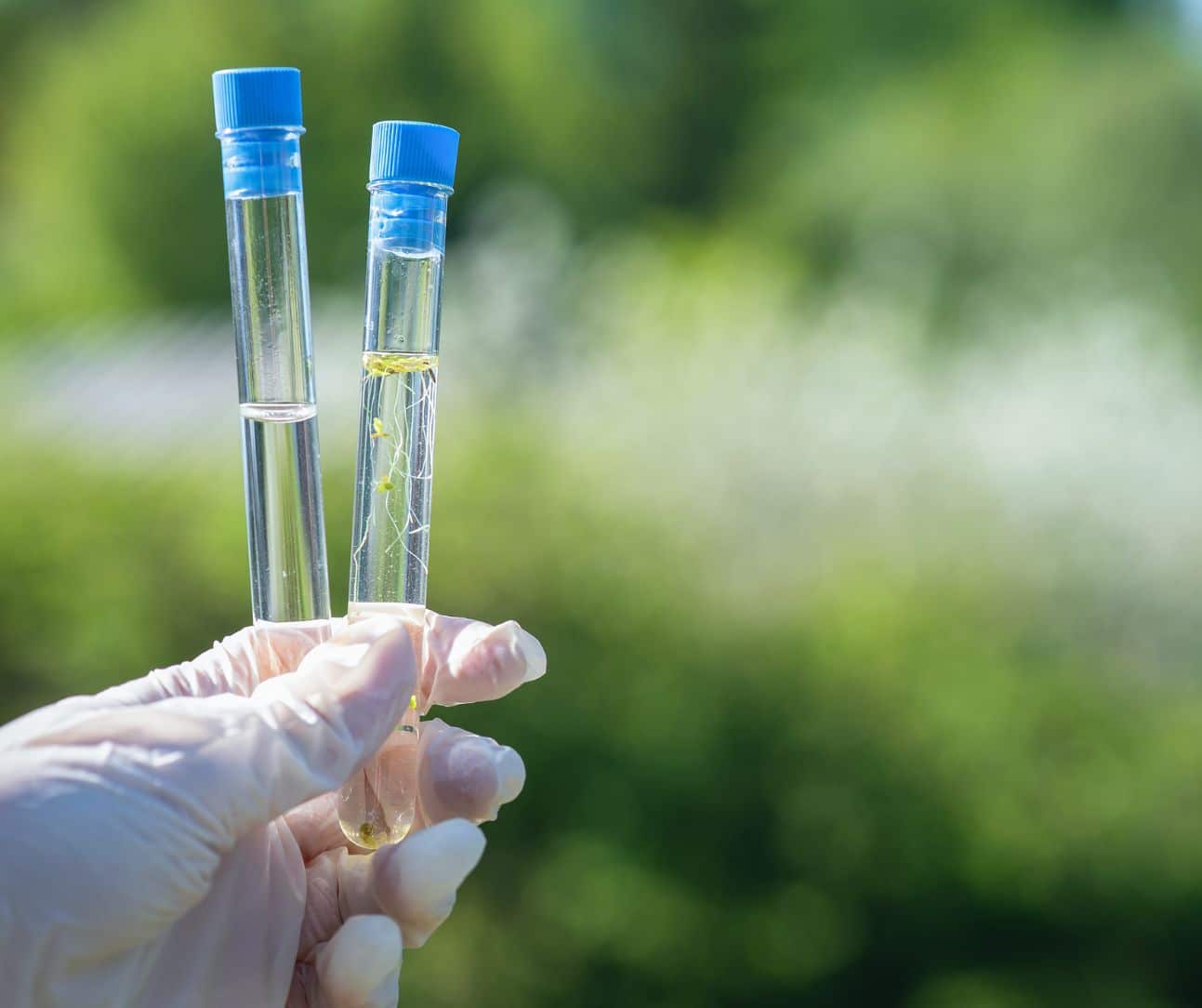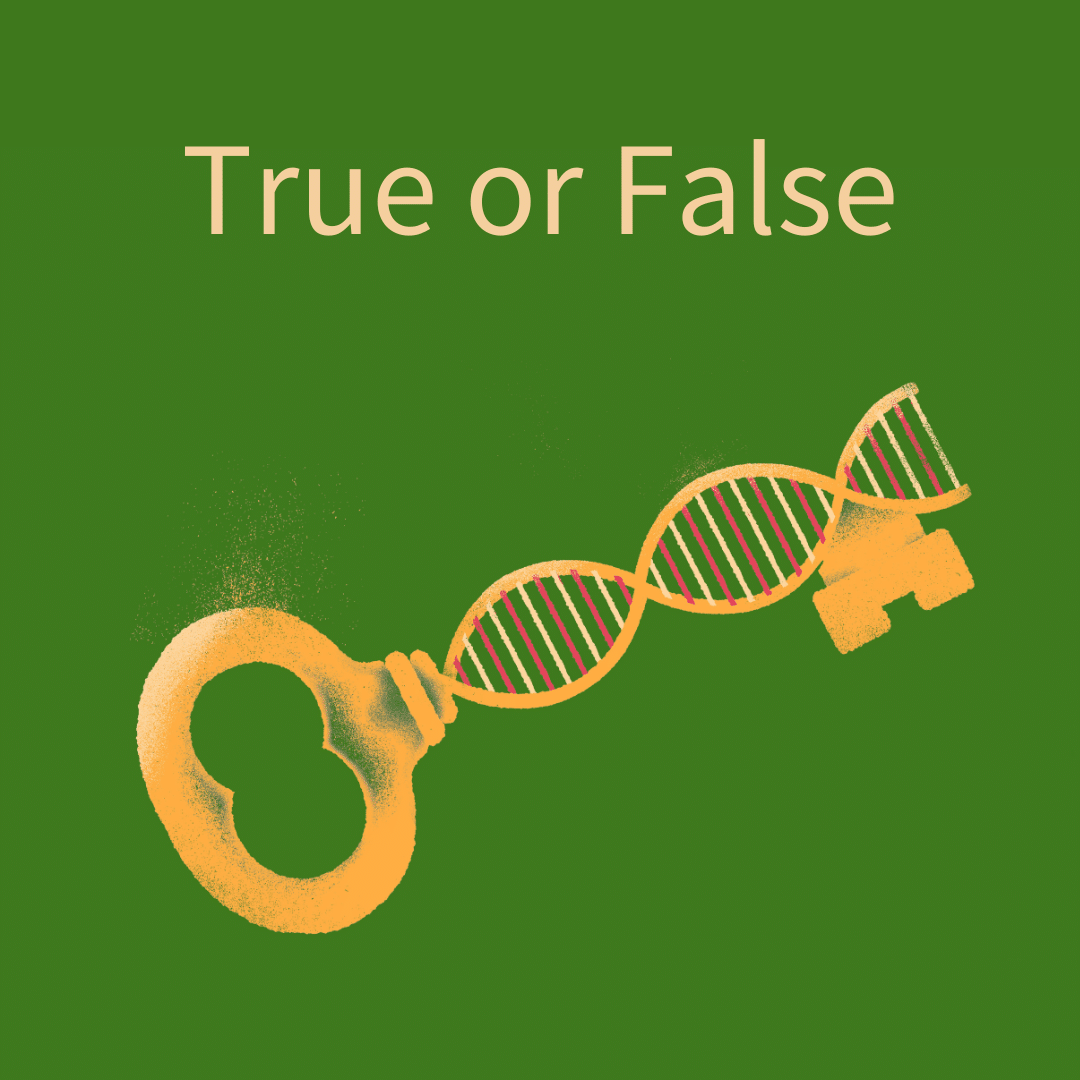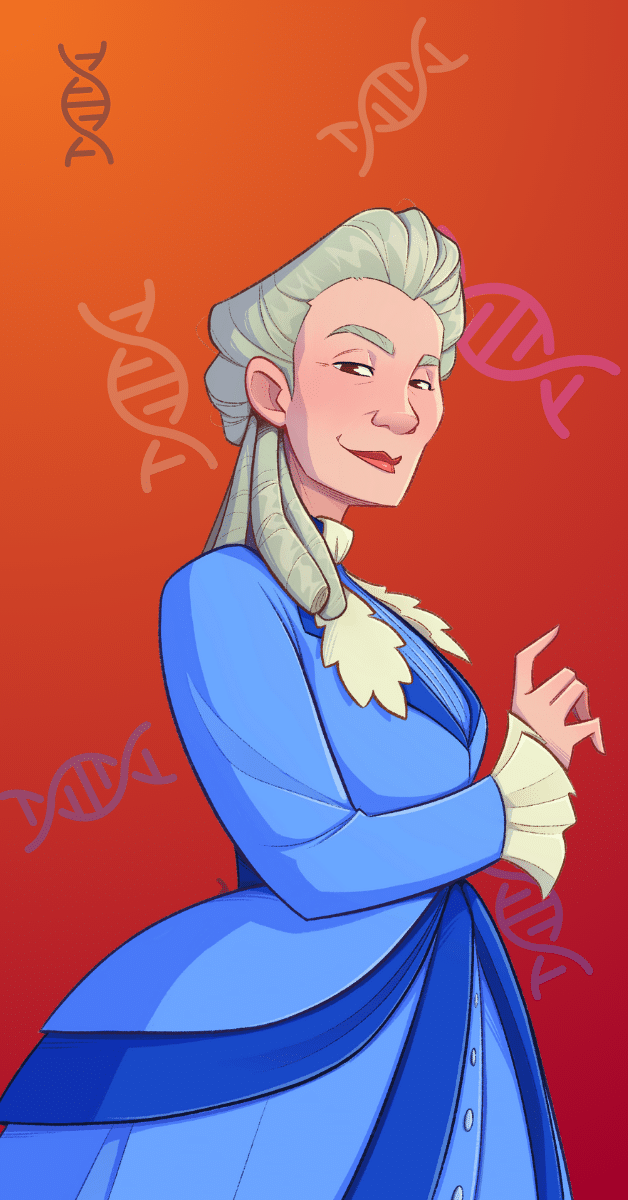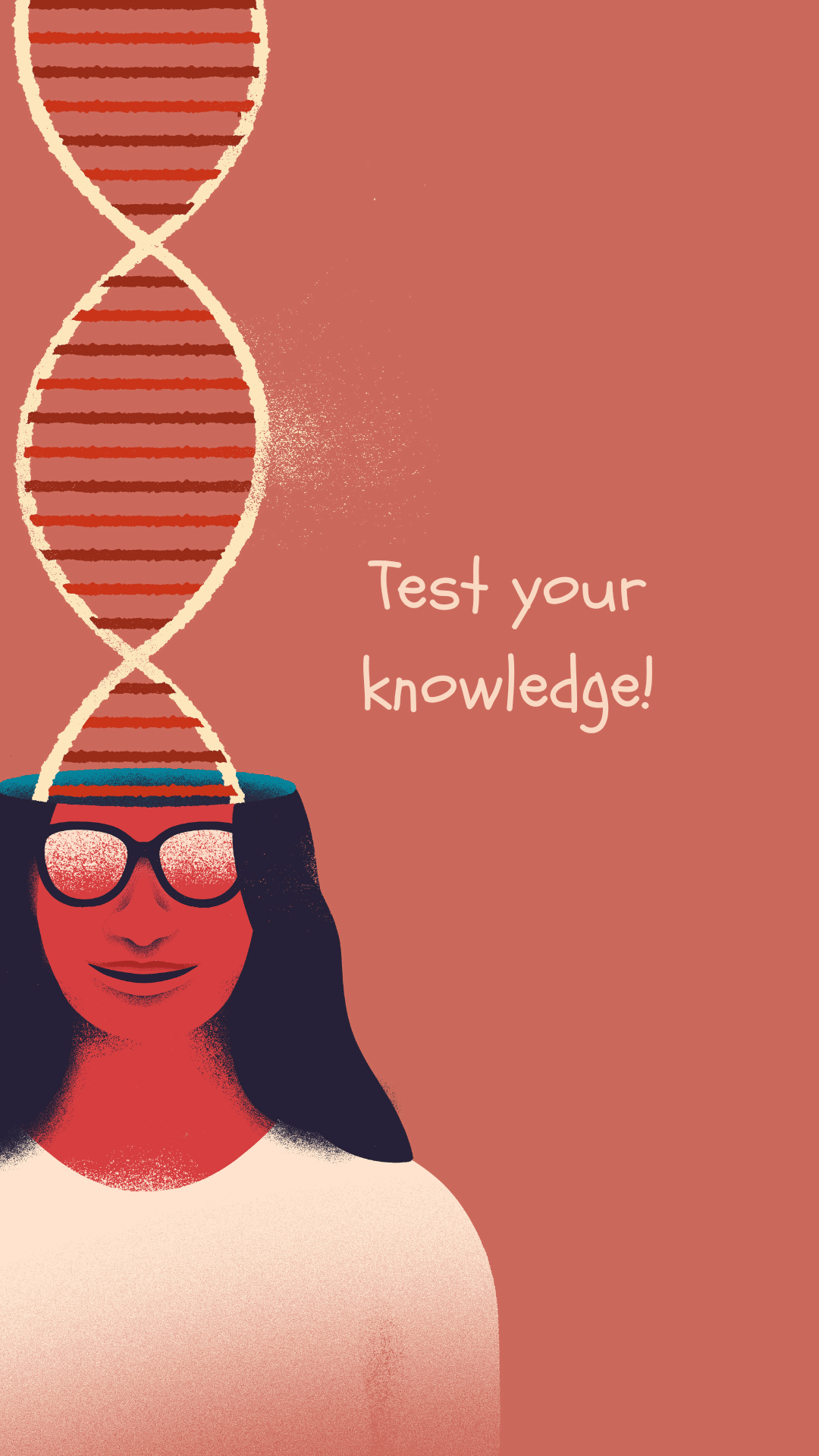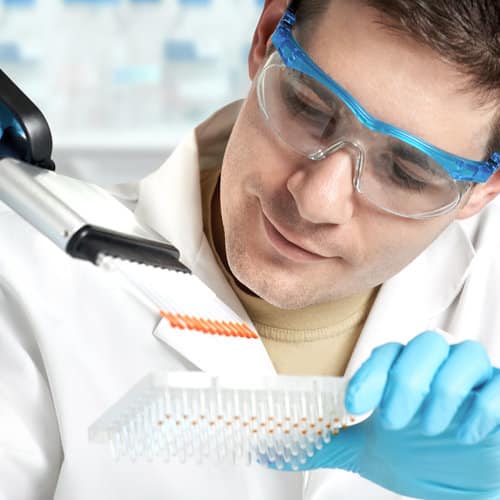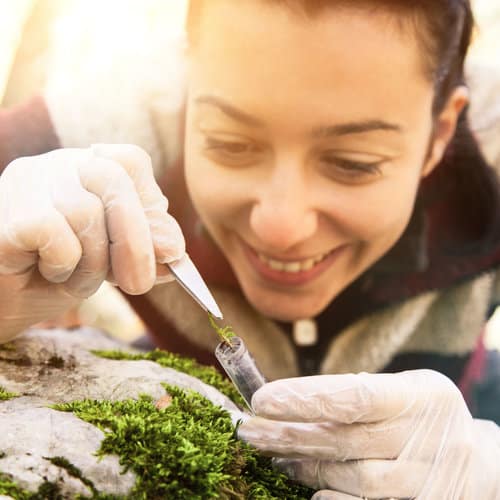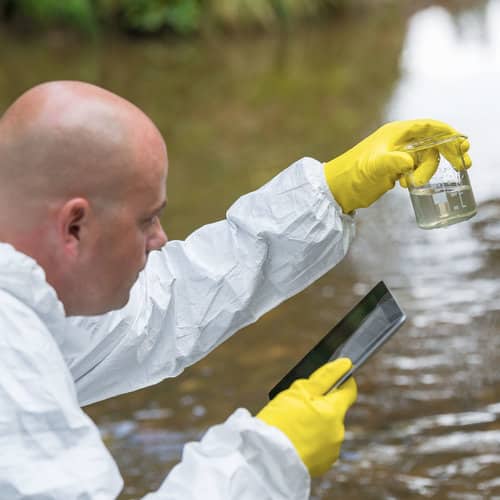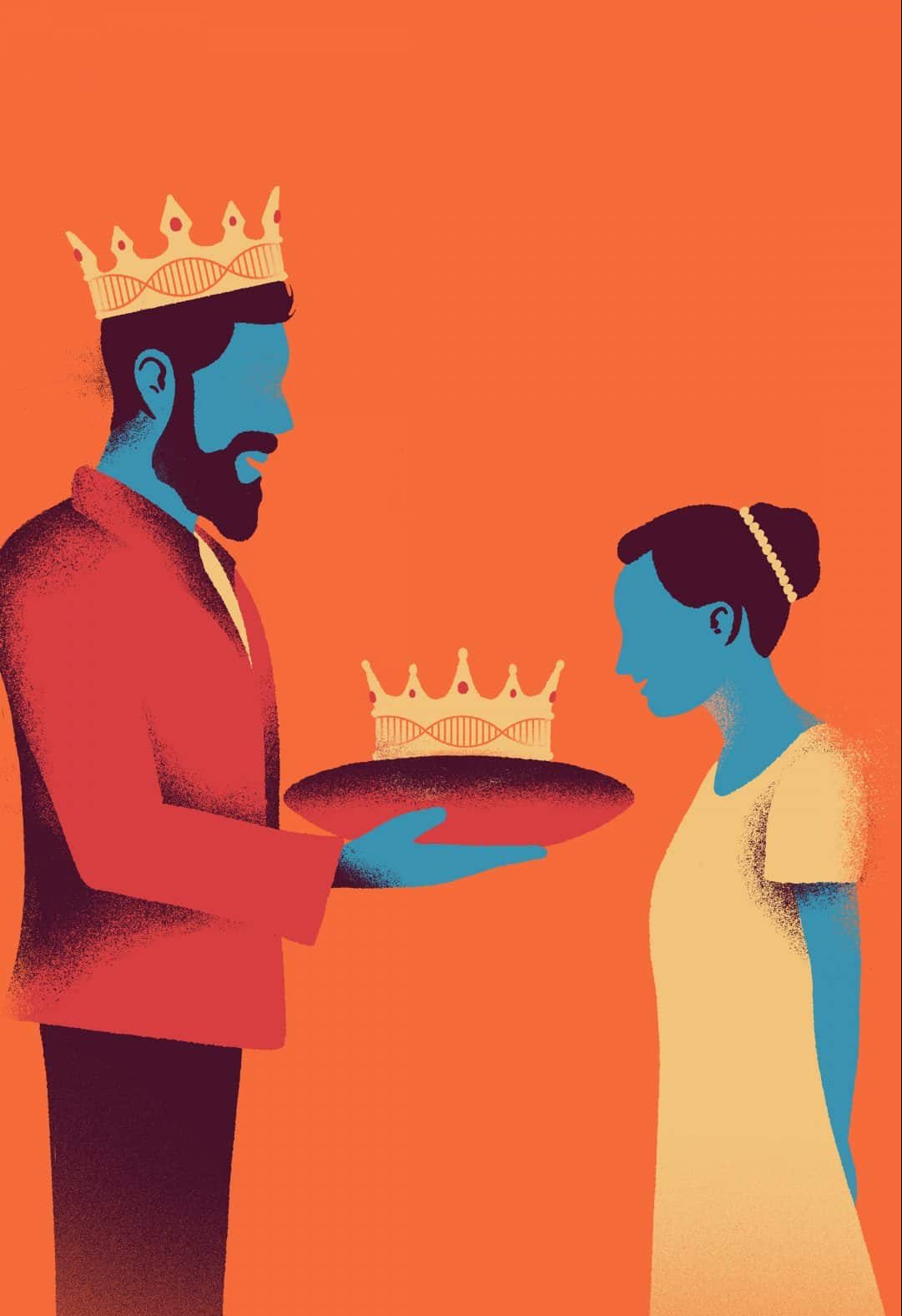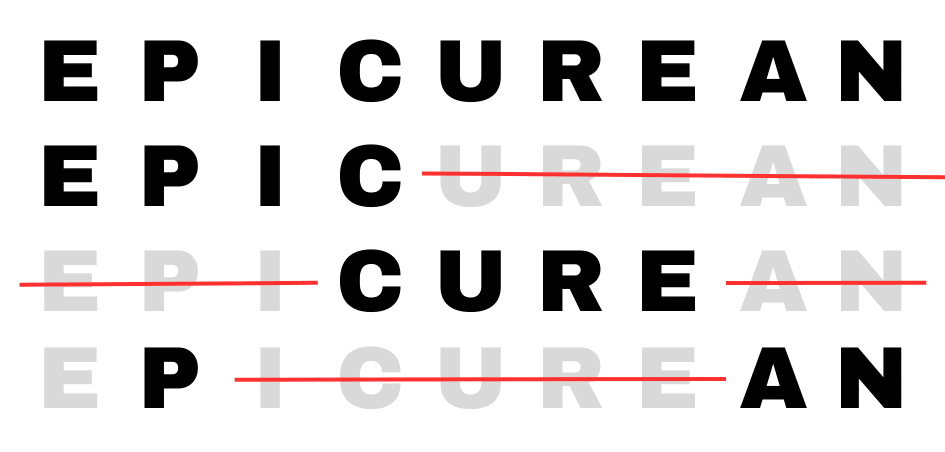What is DNA?
DNA, which stands for deoxyribonucleic acid, is a molecule found in the cells of all living organisms that contains the genetic information an organism needs to develop, grow and function.
The complete set of genetic material that makes up an organism’s DNA is called its genome. Genomes vary between species, as well as within species and between individuals.
A genome is like a big recipe book. Genes are the recipes in the book that are used to produce a specific component that the organism needs to function.
DNA structure
The double helix code
DNA is a very long molecule with two strands shaped like a twisted ladder. This shape is what gives it the name double helix.
The DNA strands are made of alternating sugar (deoxyribose) and phosphate molecules. Each sugar molecule bonds to one of four nitrogenous bases called adenine (A), thymine (T), cytosine (C) and guanine (G). When these bases form pairs, A always goes with T and C always goes with G. These pairs link the two strands together to form the “rungs” of the ladder.
How is DNA decoded?
The term genetic code refers to the order that the nitrogenous bases follow each other on a strand of DNA, an example being A-C-C-A-T-T-C-G-C-T. Genetic sequencing lets us decipher this code. These letters can be thought of as an alphabet forming words in a recipe that help us understand how organisms are put together.
A genome is made up of both coding and non-coding DNA. Coding DNA contains information that creates a protein. This type accounts for about 2% of the genome. The non-coding parts include promoters, stop codons and enhancers that regulate the expression of certain genes. The role of some non-coding DNA is still not fully understood.
Where is DNA located?
All of an organism‘s cells, except its gametes, contain a complete copy of its genetic material.
Animal and plant cells are called eukaryotic, which means they have a nucleus that stores DNA. Organisms, such as many microorganisms, that do not have a nucleus in their cells are called prokaryotic. In these cells, the DNA floats in the cytoplasm and clusters into a mass called the nucleoid.
In eukaryotic cells, the DNA—which contains all of an organism’s genetic information—stays in the nucleus, where it is protected and compacted.
To get the genetic information out of the nucleus, the DNA is copied into RNA. Messenger RNA then leaves the nucleus to direct protein synthesis in the cytoplasm, while other types of RNA, such as ribosomal RNA and transfer RNA, actively help different parts of the cell to function.
In eukaryotic cells, DNA is also found in mitochondria and chloroplasts.
Mitochondria are organelles that produce energy (ATP). This type of DNA is different from nuclear DNA. It has a circular shape and is transmitted from one generation to the next through the mother’s egg cells. This means that an entire maternal line will have the same mitochondrial DNA! (Note: Although rare, mitochondrial DNA can be passed on from the father. Studies are ongoing to understand how this happens.)
Chloroplasts are organelles that conduct photosynthesis. For a long time, it was thought that chloroplast DNA was also circular, but studies show that it is more often linear. Chloroplast DNA is passed on through egg cells or pollen and allows the chloroplasts to synthesize some of their proteins.
Although viruses are not made of cells, they do contain genetic material in the form of DNA or RNA. To replicate and spread, they need to hijack the mechanisms and resources of the cell they invade, called the host cell.
A DNA virus will enter the nucleus and deliver its viral genome into the host cell’s DNA. The virus then takes control of the cell’s machinery to produce viral proteins.
RNA viruses take over the ribosomes of infected cells directly to produce viral proteins.
DNA compaction: Big information in a small package
DNA is extremely long, and each human cell contains about 2 metres of this molecule! To fit the entirety of its genetic information into the tiny nucleus of a cell, DNA is compacted and coiled into chromatin.
Compaction also regulates access to DNA and controls gene expression. This is because compacted regions cannot be reached by RNA polymerases and therefore can’t be transcribed into RNA.
Chromatin is formed through multiple stages of compaction:
1. Proteins called histones form a spherical structure called the nucleosome. The DNA winds around this structure like a spool.
2. These nucleosomes become compacted to form chromatin, or strands of coiled DNA that look like beads on a necklace.
When cells divide, chromatin reorganizes itself into an even more compact form called chromosomes.
Humans have 23 pairs of chromosomes, with each pair assigned a number from 1 to 23. The first 22 pairs of chromosomes are called autosomes. The 23rd pair are the sex chromosomes, and these come in two types in humans: X and Y. The 23rd chromosome pair may consist of:
- two identical chromosomes (XX)
- two different chromosomes (XY)
The sex chromosomes do not always come in pairs, as an individual may have:
- a single X chromosome
Or
- three chromosomes (XXX, XXY or XYY)
An image of the size, shape, number and structure of an individual’s chromosomes can be produced with karyotyping, which involves taking a snapshot of chromosomes during cell division when the chromosomes are most visible.
Karyotyping is frequently done by medical geneticists to diagnose genetic disorders.
Chromosomes are passed on by the parents during sexual reproduction. Reproductive cells, called gametes, have one pair of chromosomes each. During fertilization, the gametes merge to form a zygote, which then inherits a complete set of chromosomes.
Each parent therefore passes on half of their chromosomes to their offspring.

